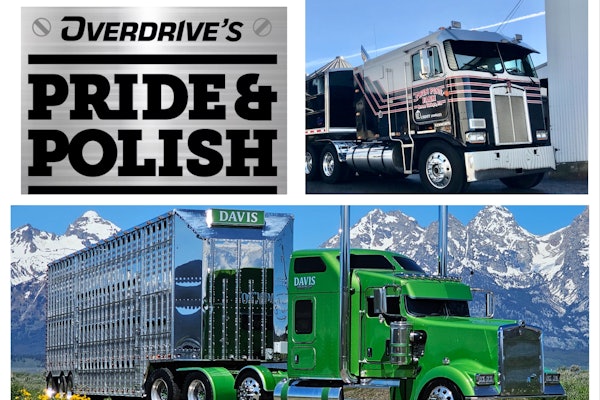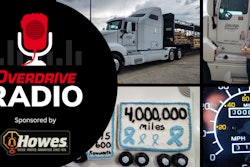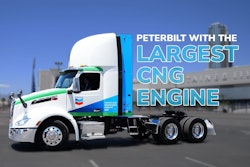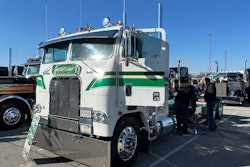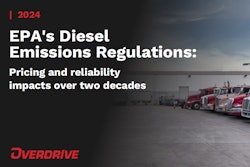Being able to survive and thrive as a business owner has as much to do with managing costs as it does with generating revenue. Like the chief financial officer of any company, you have to be concerned about rising costs, especially without increases in revenue.
Trying to reduce costs, let alone make sense of them, can be a complicated task. Understanding basic principles of operating costs can save you thousands of dollars a year.
A penny saved is $1,000 earned. The owner-operator who can save just one penny per mile over 100,000 miles driven annually will save $1,000 in a year.
Costs are not the same each month. If 9,600 miles are driven one month and 10,000 miles the next month, there will be two different sets of costs for each month. For example, if your tractor payment is $1,850 per month and you drive 9,600 miles in the month, your tractor payment will cost you 19.3 cents per mile. However, if you drive 10,000 miles, your tractor payment will cost you 18.5 cents per mile. This is one of your major fixed costs while paying off a truck loan.
Fixed costs do not go down over time, but you can reduce overall cost per mile by driving more miles. The difference per mile here is only 0.8 cent, which may seem like small change, but remember the “one penny saved” rule.
For every extra dollar of revenue generated, only part of that dollar is profit. But for every extra dollar of cost saved, that entire dollar contributes to your profit.
Costs cannot be understood on a per-mile basis alone. In the example above, the 10,000-mile month results in a lower cost per mile. Also, as the cost per mile was reduced, revenue went up for driving the extra miles -- a double benefit per mile.
Fixed and variable costs
A fixed cost already is determined and does not change from month to month or week to week. Any expense defined by time -- a tractor payment, insurance payment, license fees -- is a fixed cost. That cost will be the same every day whether your truck is driven one mile or 600. It is a daily fixed expense, and has to be confronted 365 days per year.
A variable cost is related to how much you drive. Fuel, tires and maintenance are good examples. Most variable costs will be similar for every mile you run. These are the costs for distances traveled and other items that are required to move the truck the distance your load requires.
Applying fixed and variable costs
As shown in the following hypothetical example, an owner-operator leased to another entity might show a variable cost of 79 cents per mile and a fixed cost of $115 per day. The chart here illustrates how to apply fixed and variable costs. Assume pay of $1.40 per mile from the leasing carrier.
 In Example A, the operator couldn’t break even, so there was no money left to pay himself for driving or to cover personal expenses. In Example B, the operator is making a meager profit, with a little money to pay himself for driving. And in Example C, the successful operator has money left over for savings and retirement after paying all expenses.
In Example A, the operator couldn’t break even, so there was no money left to pay himself for driving or to cover personal expenses. In Example B, the operator is making a meager profit, with a little money to pay himself for driving. And in Example C, the successful operator has money left over for savings and retirement after paying all expenses.
Also, note how fixed cost-per-mile was reduced in each successive example.
Where the money goes
 The Overdrive/ATBS Partners in Business owner-operator business education program is sponsored by Rush Truck Centers, the premier solutions provider to the commercial vehicle industry with 150-plus full-service dealership locations in the United States and Canada. The new PIB book is now available for download.
The Overdrive/ATBS Partners in Business owner-operator business education program is sponsored by Rush Truck Centers, the premier solutions provider to the commercial vehicle industry with 150-plus full-service dealership locations in the United States and Canada. The new PIB book is now available for download.
Based on the averages of clients of ATBS through December 2023, here’s the percentage of total revenue a leased owner should expect to spend on key expenses:
- Fuel: 30.8%
- Truck payment: 19.1%
- Maintenance: 6.6%
- Insurance: 4.5%, counting physical damage, bobtail and occupational accident premiums
- License and permits: 2%
- Cell phones and other communications: 1%
The average ATBS client nets 36.6 cents for every dollar of gross revenue, meaning 63 cents of each dollar earned has to go toward vital business expenses. Keep that in mind the next time you’re tempted to go on a spending spree with a big settlement check.
On the other hand, if you’re paying yourself much less than a third of your revenue, take a careful look at your records. Chances are one or two costs are out of control, or your revenue is too low.
[Related: How to move equipment financing terms to your favor]
